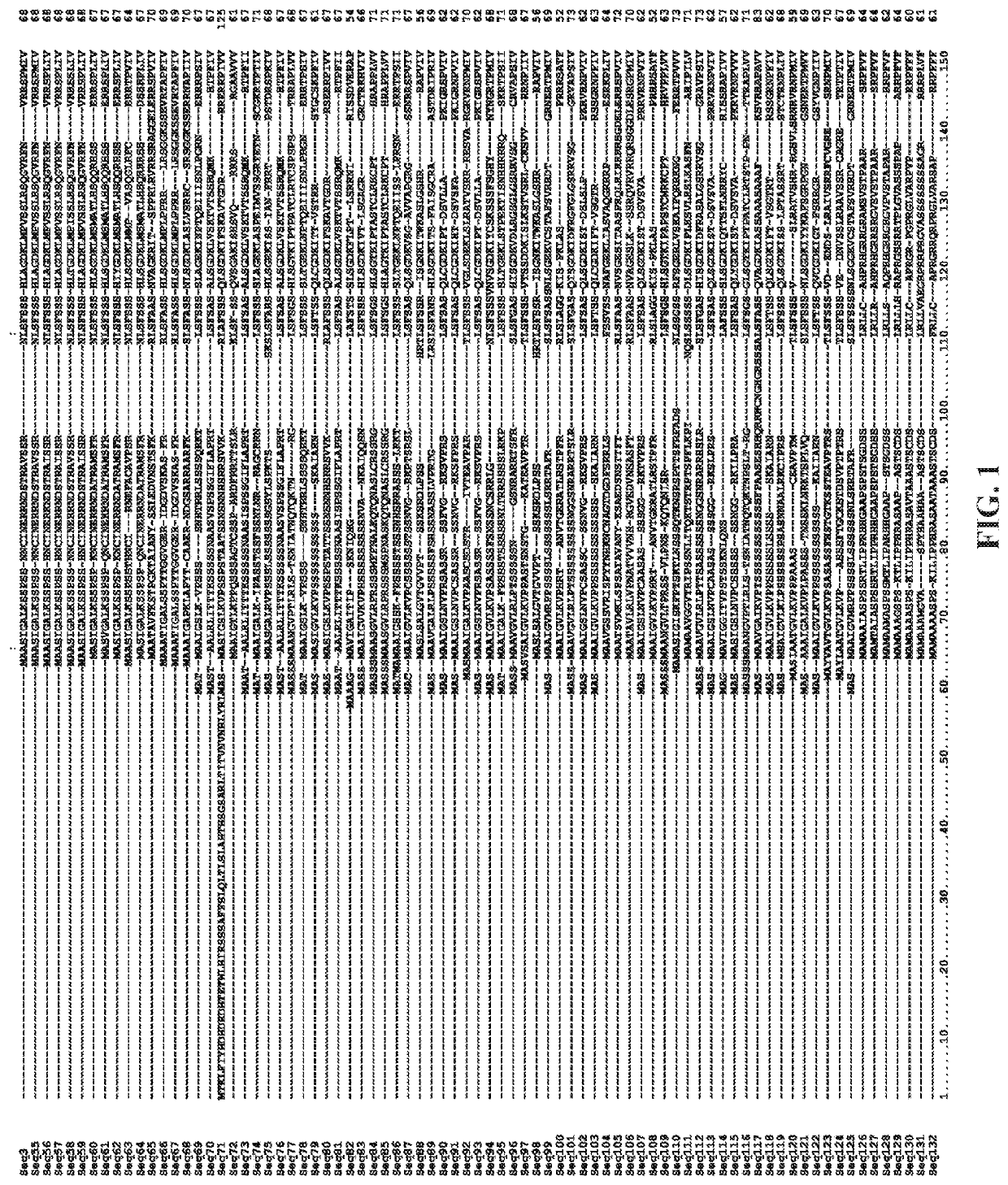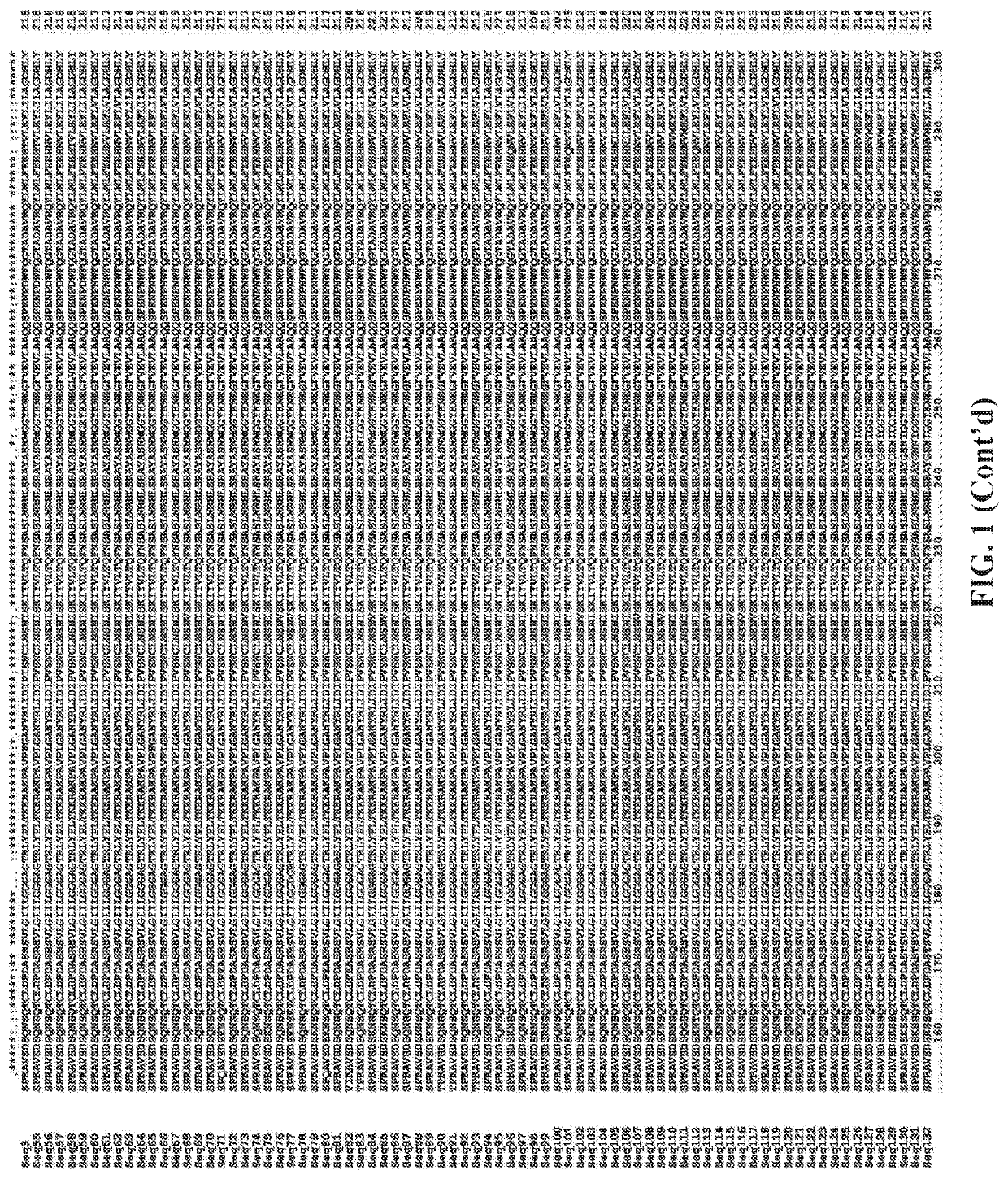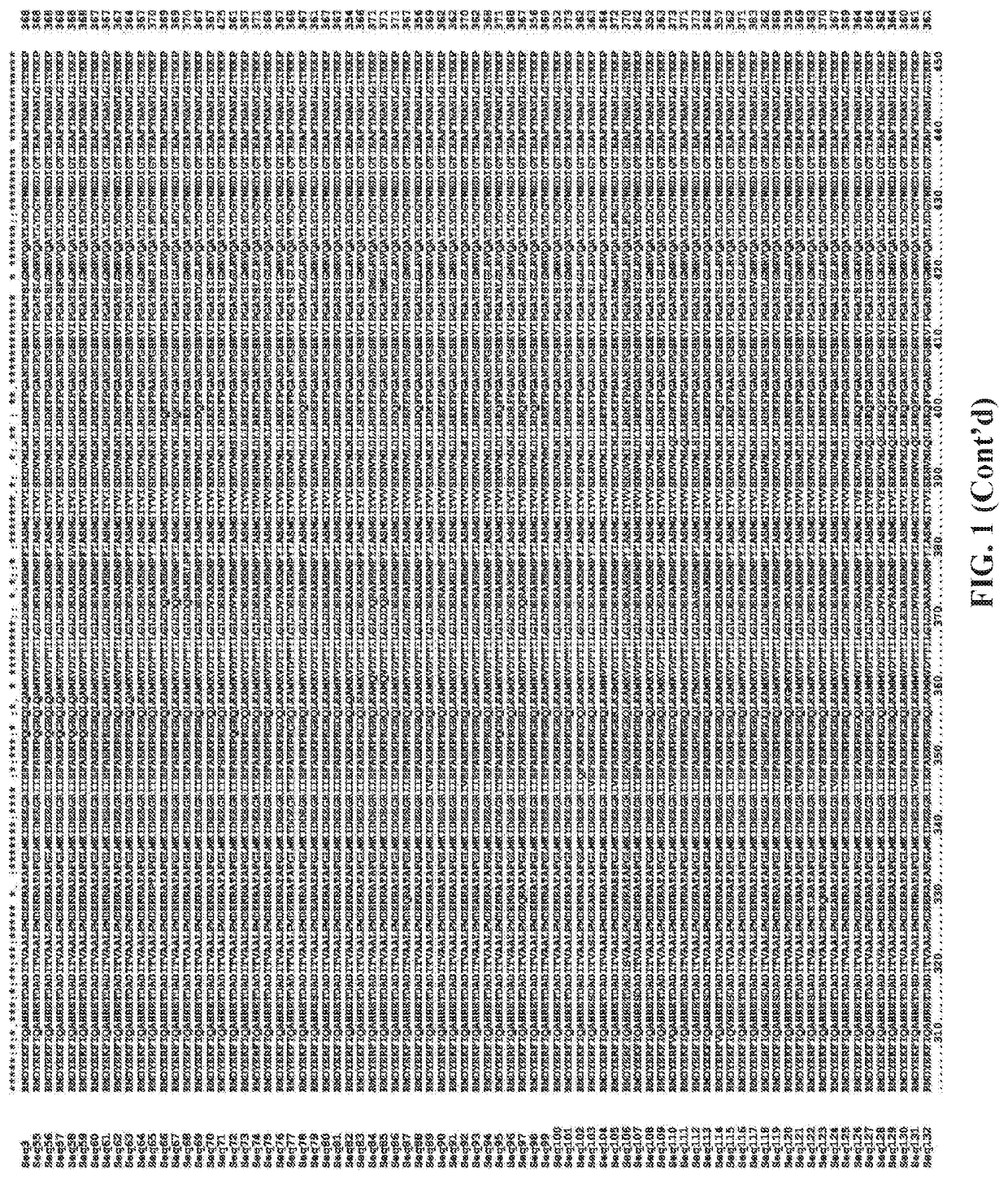Increasing plant growth and yield by using an adp-glucose pyrophosphorylase sequence
a technology of adp-glucose pyrophosphorylase and adp-glucose, which is applied in the direction of enzymology, biochemistry apparatus and processes, transferases, etc., can solve the problems of plant growth and development impairment, and achieve the effects of increasing plant growth, increasing crop yield, and increasing the expression of at least one adp-glucose pyrophosphorylas
- Summary
- Abstract
- Description
- Claims
- Application Information
AI Technical Summary
Benefits of technology
Problems solved by technology
Method used
Image
Examples
example 1
Construction of AGPaseSS Plant Transformation Vectors
[0129]An open reading frame encoding an AGPaseSS protein was synthesized. This open reading frame comprised SEQ ID NO:1 or SEQ ID NO:2, encoding the protein sequence of SEQ ID NO: 3. Appropriate restriction sites were included at the 5′ and 3′ ends of the coding sequence to allow this DNA to be cloned into plant transformation vectors that contained genetic elements suitable for controlling gene expression. In each plant transformation construct, the AGPaseSS open reading frame was located downstream of a plant promoter and 5′ untranslated region (5′UTR) and upstream of a 3′UTR Table 2. summarizes the plant transformation constructs that were built containing an AGPaseSS open reading frame. The AGPaseSS protein encoded by each of the ORFs in Table 2 is the protein sequence of SEQ ID NO:3.
TABLE 2AGPaseSS plant transformation constructsConstruct IDPromoter + 5′UTRORF3′UTR130101ZmUbi (SEQ ID NO: 4)AGPaseSS (SEQ ID NO: 1)ZmUbi (SEQ ID...
example 2
Transformation of Setaria viridis
[0131]A. tumefaciens cells harboring AGPaseSS plant transformation vectors were used to transform S. viridis cells according to a previously described method (PCT / US2015 / 43989, herein incorporated by reference). Following transformation of the S. viridis cells with the relevant plant transformation vectors and regeneration of S. viridis plants, the plants were transferred to soil and PCR analyses were performed to confirm the presence of the gene(s) of interest in the S. viridis genome. Table 4 summarizes the transformation constructs used to transform S. viridis, along with the number of plants that were transferred to soil following S. viridis transformation with each construct.
TABLE 4Summary of S. viridis transformation withAGPaseSS plant transformation vectorsConstruct# To Soil130816271311704113096631310094613101125130965591310021813100828131010351306301130978371310636213106410
example 3
Transformation of Maize (Zea mays)
[0132]A. tumefaciens cells harboring AGPaseSS plant transformation vectors were used to transform maize (Zea mays cv. B104) cells suitable for regeneration on tissue culture medium. Following transformation of the maize cells with the relevant plant transformation vectors and regeneration of maize plants, the plants are transferred to soil and PCR analyses are performed to confirm the presence of the gene(s) of interest in the maize genome. Constructs 130673 and 130880 were used to transform maize, resulting in two and six plants, respectively, that were transferred to soil.
PUM
| Property | Measurement | Unit |
|---|---|---|
| nucleic acid sequence | aaaaa | aaaaa |
| size | aaaaa | aaaaa |
| stress tolerance | aaaaa | aaaaa |
Abstract
Description
Claims
Application Information
 Login to View More
Login to View More - R&D
- Intellectual Property
- Life Sciences
- Materials
- Tech Scout
- Unparalleled Data Quality
- Higher Quality Content
- 60% Fewer Hallucinations
Browse by: Latest US Patents, China's latest patents, Technical Efficacy Thesaurus, Application Domain, Technology Topic, Popular Technical Reports.
© 2025 PatSnap. All rights reserved.Legal|Privacy policy|Modern Slavery Act Transparency Statement|Sitemap|About US| Contact US: help@patsnap.com



